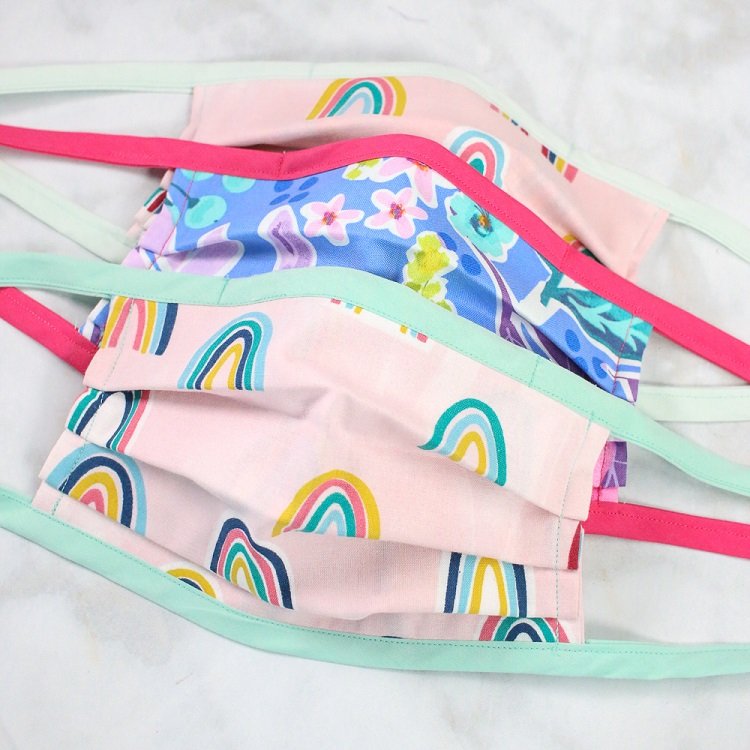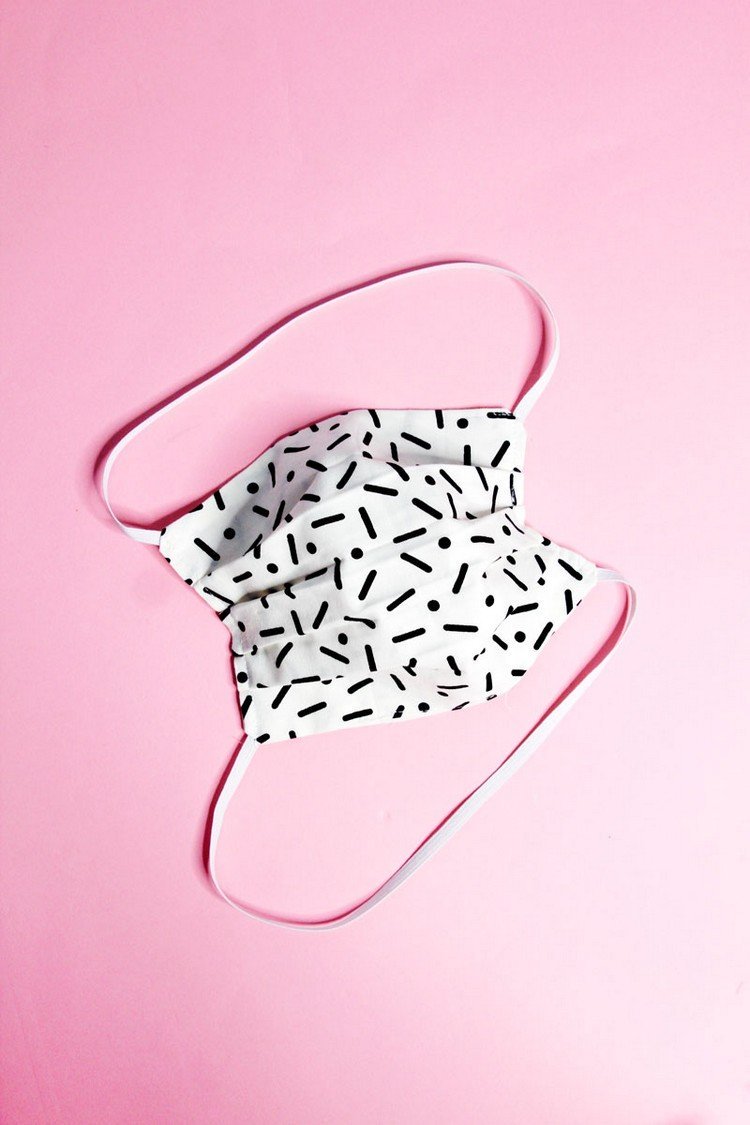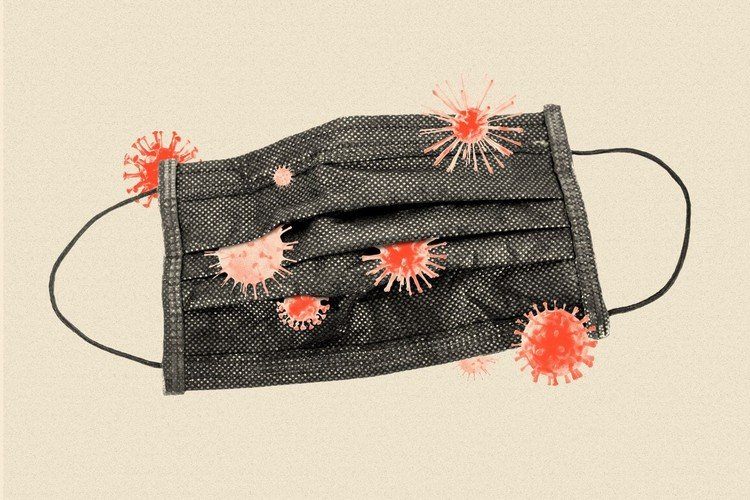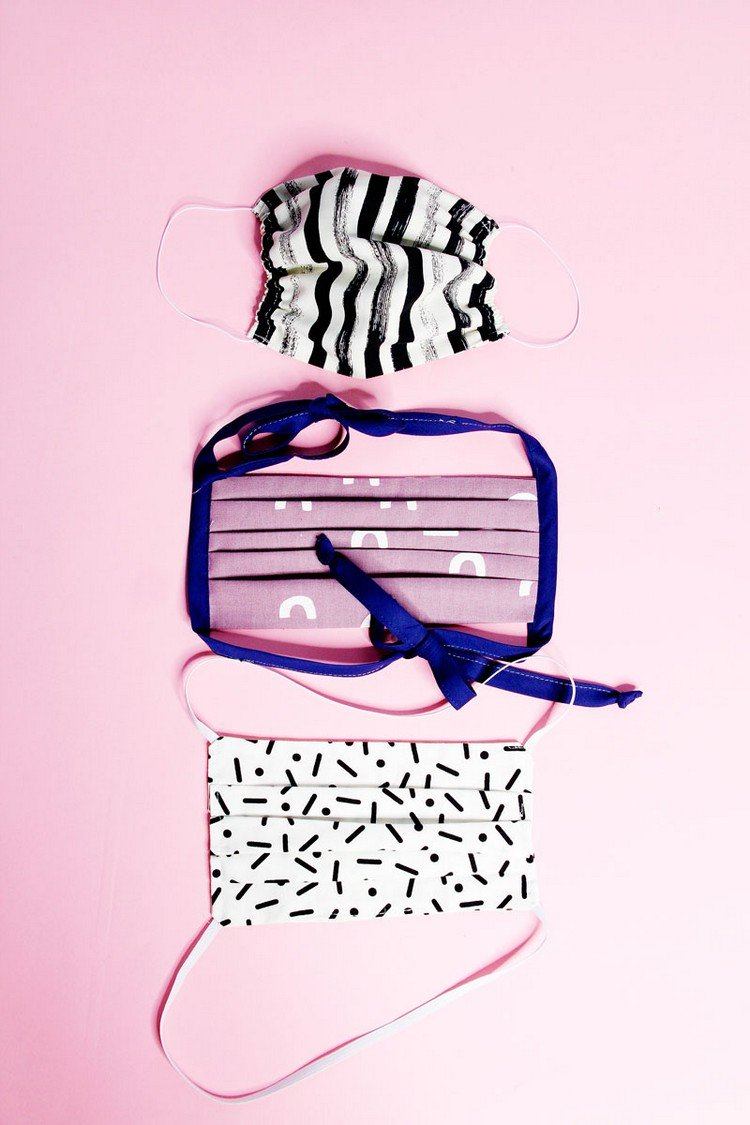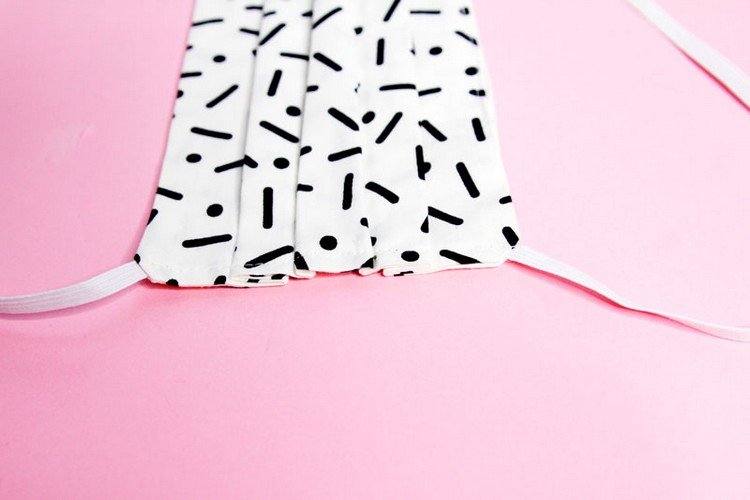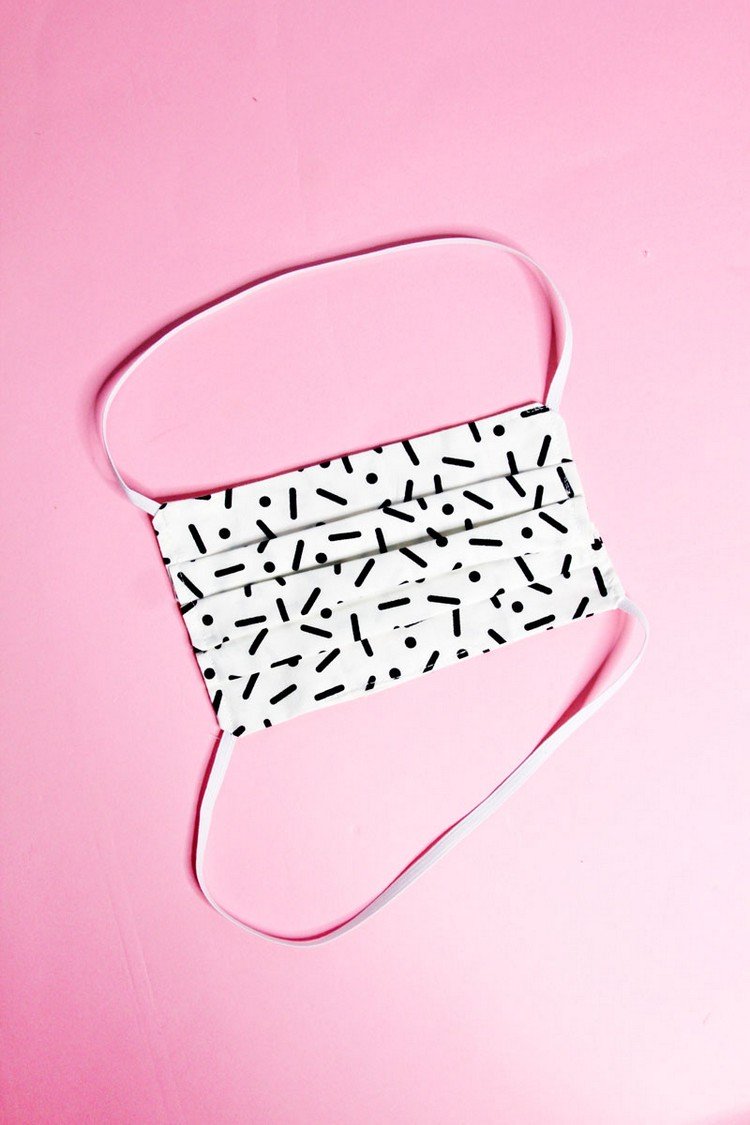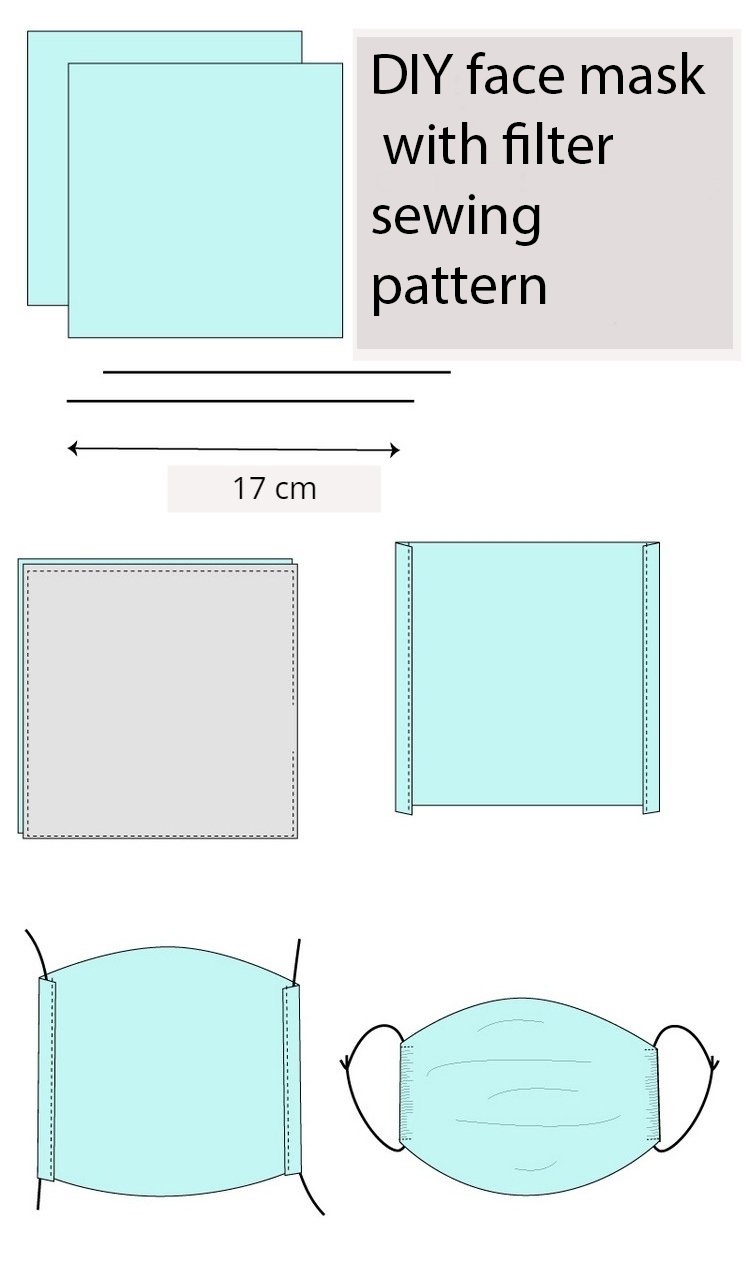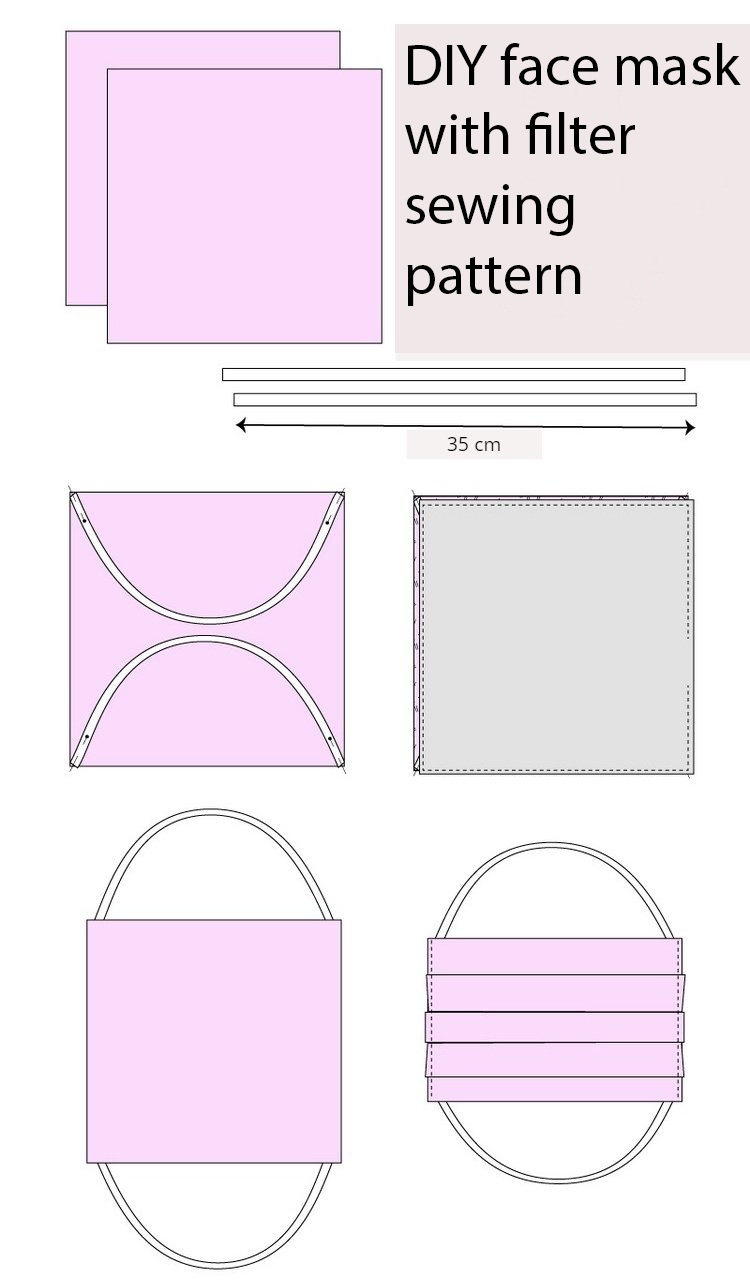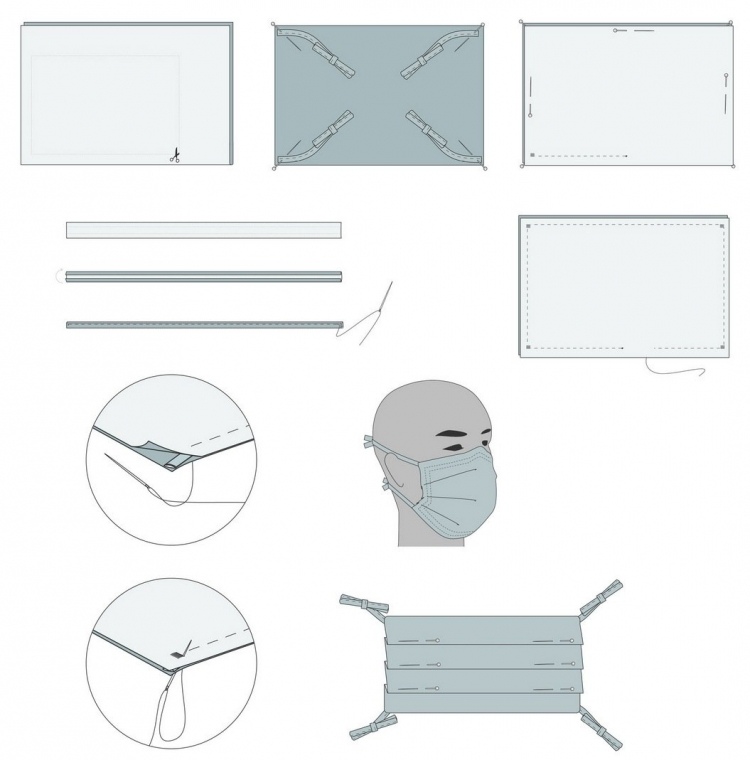DIY face mask with filter – a good or a bad idea? Faced with the spread of the coronavirus, there are plenty of recommendations how to protect yourself from the pandemic. While some encourage people to wear protective face masks, others are against that, claiming that masks are useless and incapable of protecting uninfected people.
The confusion is great, because under a breathing mask both the special FFP masks and the surgical face mask are described. Even homemade alternatives are available in numerous shops online. Whether and how well these masks actually protect is controversial. We try to clarify the question and explain to you how you can make a face mask with a filter from household items. After the swine flu, scientists from the University of Cambridge carried out a study and checked whether self-made respirators can really protect against infection. It has been found that these should only be considered as a last resort to prevent the transmission of droplets from infected people, but it would still be better than no protection.
Protection face mask with filter: what are the different types of masks?
Before showing you how to make your own protective face mask with filter from household items, we will first take a closer look at the different types of mask. Knowing how to differentiate them is important because not all are intended for the same use and do not offer the same level of protection. There are three types of masks.
The first type is the surgical mask. These are worn by the doctors in hospitals during an operation. The mouth-nose protection masks consist of three layers: the inner one feels pleasant, the middle one filters the fine particles out of the air, which also means viruses and bacteria, the outer one has a liquid-repellent effect. They do not protect the medical professional, but the patient from infection with viruses and bacteria. As far as coronavirus is concerned, these face mask masks are worn without a filter by sick people. If the infected person coughs or sneezes, the mask catches the droplets and prevents other people from getting infected. Depending on the manufacturer, these masks should not be worn for more than 3 to 8 hours and must be changed regularly. After taking the mask off, it is imperative to wash your hands with soap and water or to disinfect them. In the context of the worldwide coronavirus pandemic, one wonders, and with good reason, why the majority of people wear such masks if they cannot protect healthy people? Theoretically, if we all wore masks, the spread of COVID-19 could have slowed down. But given the large number of infected people without symptoms who could infect others, wearing barrier masks could really make sense. To recognize real masks, they must be certified and conform to standard EN14683.
The second type is the FFP individual respiratory protection mask. These medical devices are composed of several layers and have a face piece and a filtration device. Unlike surgical masks, FFPs protect as much against airborne or droplet transmission as they do against potential inhalation of the virus. There are three versions, according to the EN149-2001 standard: FFP1, FFP2 and FFP3. Their filtration efficiency is 80%, 94% and 99% respectively, while the leakage to the outside is in the order of 22%, 8% and 2%. FFP1 masks, which can be recognized by the yellow elastic band, are used mainly as a dust mask. FFP3 masks are designed for construction sites, to protect workers exposed to toxic dust and can be recognized by the red straps. As per experts, this type of masks is suitable for protecting against coronavirus. FFP2 masks, on the other hand, are very effective against viruses and are recommended for health professionals in contact with patients. They have a white or blue elastic band and a lifespan of 4 to 8 hours. At the moment, FFP face masks are considered to be an effective protective measure when in contact with infected people. The majority of FFP masks are intended for repeated use. This means that they can be disinfected or sterilized.
The third type is the homemade protective mask. This is believed to be almost as effective as the surgical mask in preventing the transmission of the virus from infected people. However, health experts warn that in most cases, homemade masks cannot provide effective protection. While, according to EU standards, the respiratory protection mask must be composed of three layers (with a filter layer in the middle), the majority of DIY masks are composed of a single layer of fabric and without filter.
However, faced with the shortage of protective masks for both medical personnel and citizens, we cannot afford the luxury of depriving ourselves of homemade masks. These are not certified and conform to EU standards and are rather an additional means of protection and not an effective protective mask. In any case, homemade anti-virus masks can be useful in the following cases:
- When shopping;
- At home, to reduce the spread of a potential infection in your own home;
- When you wear a mask, you think you are protected and you feel better. Even if the handmade mask is not always effective, it helps relieve anxiety.
A homemade face mask with filter cannot replace other protective measures. It is out of the question to visit your grandparents even with a mask, because the risk of infection is very high. In addition, you should not rely on the masks to protect effectively from the corona virus and to neglect important hygiene measures such as hand washing. Even if you wear a face mask, try not to touch your face. According to some experts, these masks are falsely reassuring and they do not protect the wearer or those around him. It is true that they can filter large particles (such as dust and pollen for example), but this is not the case for viruses which are microscopic microorganisms. So these masks cannot protect from the Covid-19.
Warning! Children and babies are not allowed to wear handmade masks! As a rule, children are only allowed to wear a respiratory protection mask after consultation with the pediatrician. For babies, there is a risk of suffocation, therefore, wearing a mask is not recommended.
DIY face mask with filter – what materials to use?
As we already mentioned, a face mask with filter consists of three layers. If you want to make an anti-virus mask yourself, the following materials could do the trick:
- Linen tea towels
- Cotton blend T-shirts
- T-shirts and blouses made of cotton (but no knitwear and sweaters!)
- Scarves
- Antibacterial pillowcases
- Cotton pillowcases
- Silk bed linen
According to the study, discussed in the first paragraph, cotton T-shirts and linen tea towels are best suited for making DIY respiratory protection masks, because these materials are breathable.
DIY respiratory protection mask: what is the role of the filter?
A certified breathing mask does not let viruses or bacteria pass through which provides an effective protection against Covid-19, while the effectiveness of homemade masks has not been proven.
Why do we need filters when there is scientific evidence that most household items can only filter small particles to a limited extent and are unsuitable as protection against coronavirus? A mask that is only made of fabric quickly becomes wet with our breath and is no longer effective. However, filters from household items can help prevent a smear infection. Here are the materials that can be used as filters:
- Hepa filters can filter particles with a diameter greater than or equal to 0.3 µm2;
- Sebo filter bags;
- Paper towels ;
- Dry wet wipes.
Editor’s tip: Always test in advance if you can breathe easily through the protective mask you have. If it is not the case, it is better not to wear the face mask. For safety reasons, you can also contact the local authorities, the manufacturer or supplier, as well as your family doctor to find out whether the filter chosen is harmful to health or not. People with allergies or asthma should avoid self-made filter masks to avoid health risks.
DIY face mask with filter instructions
If you want to make a DIY face mask with filter, you will find two simple models below. For the first and third layer, you will need fabric, and for the filter layer, you must choose a filter of your choice. Pay attention that the mask is perfectly adapted to the shape of your face. The two sewing patterns we provide are quite simple and suitable even for beginners.
Who should not wear a homemade face mask?
- Babies and toddlers
- Allergy sufferers
- People with asthma
- People with pulmonary or cardiovascular disease
Towards the study of the University of Cambridge

